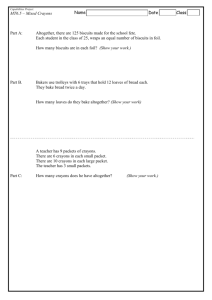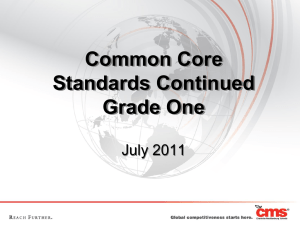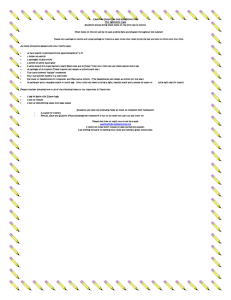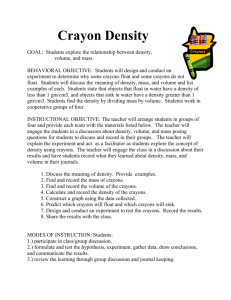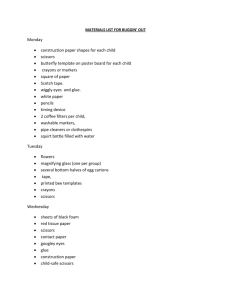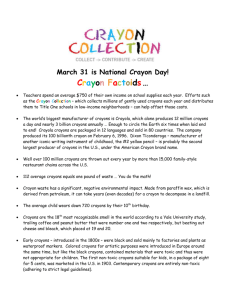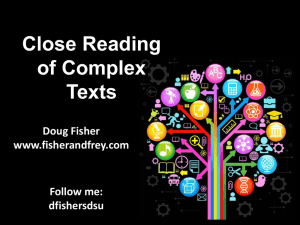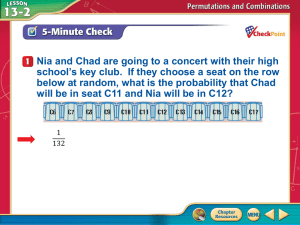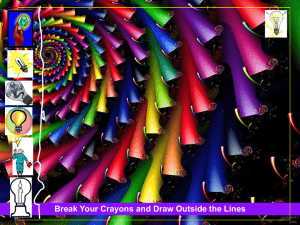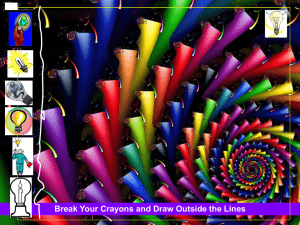HMH Storytown 1 The Crayon Box that Talked final
advertisement
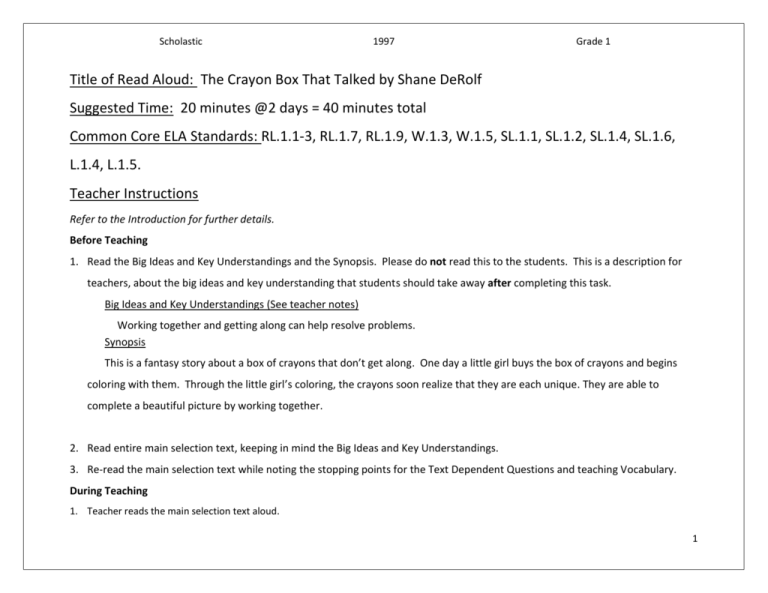
Scholastic 1997 Grade 1 Title of Read Aloud: The Crayon Box That Talked by Shane DeRolf Suggested Time: 20 minutes @2 days = 40 minutes total Common Core ELA Standards: RL.1.1-3, RL.1.7, RL.1.9, W.1.3, W.1.5, SL.1.1, SL.1.2, SL.1.4, SL.1.6, L.1.4, L.1.5. Teacher Instructions Refer to the Introduction for further details. Before Teaching 1. Read the Big Ideas and Key Understandings and the Synopsis. Please do not read this to the students. This is a description for teachers, about the big ideas and key understanding that students should take away after completing this task. Big Ideas and Key Understandings (See teacher notes) Working together and getting along can help resolve problems. Synopsis This is a fantasy story about a box of crayons that don’t get along. One day a little girl buys the box of crayons and begins coloring with them. Through the little girl’s coloring, the crayons soon realize that they are each unique. They are able to complete a beautiful picture by working together. 2. Read entire main selection text, keeping in mind the Big Ideas and Key Understandings. 3. Re-read the main selection text while noting the stopping points for the Text Dependent Questions and teaching Vocabulary. During Teaching 1. Teacher reads the main selection text aloud. 1 Scholastic 1997 Grade 1 2. Teacher re-reads the selection aloud while stopping to engage students in responding to and discussing the questions and returning to the text. A variety of methods can be used to structure the reading and discussion (i.e.: whole class discussion, think-pair-share, group work, etc.) Text Dependent Questions Text Dependent Questions Let’s reread the first sentence of the story. Where does the beginning of this story take place? If I Overheard someone, I was listening without them knowing. Who does the little girl overhear talking? Why do all of the crayons dislike Orange? Answers The beginning of the story takes place in a toy store. (Page 2) Teacher rereads page 6 and asks students, “On page 6, what is wrong?” Look at the illustration on page 8, What is the 2nd setting in this story? The crayons don’t get along (Page 6) What did the crayons do as the little girl colored? The crayons watcher her color. (Page 12) Look at the illustration on the page 11 to determine what the author means by “They watched me as I colored with red and blue and green and black and white and orange and every color in between”. Look at the illustrations on page 15& 16. How do the crayons feel about coloring together? In the illustration I see more colors than the ones named (red, blue, green, black, white, and orange). The colors not named are the ones in between. (Page 11) Unique means one of a kind and special. How are the crayons unique? (Page 21) They are all different colors. (all pages) Re-read page 21 &22, and ask students, “How did the picture get to be complete? The crayons worked together to complete the picture. (Page 21) The little girl overhears the crayon box talking. (Page 3) No one knows just why. (Page 4) The 2nd setting of the story is the little girl’s house. (Page 8) The crayons are smiling and look happy about coloring together. (Pages 15 &16) 2 Scholastic 1997 Grade 1 Vocabulary KEY WORDS ESSENTIAL TO UNDERSTANDING WORDS WORTH KNOWING 3 Scholastic STUDENTS FIGURE OUT THE MEANING sufficient context clues are provided in the text TEACHER PROVIDES DEFINITION not enough contextual clues provided in the text BIG IDEAS OF TEXT Words addressed with a question or task Overheard (Pg. 3) Unique (Pg. 21) “Get along” (Pg. 6) 1997 Grade 1 Words to be part of systematic vocabulary instruction, not essential for understanding the big ideas of the text Well (pg. 7) Others (Pg. 6) “Laid out” (Pg. 10) “In between” (Pg. 12) Drifting (Pg. 14) Finally (Pg. 17) Culminating Task Re-Read, Think, Discuss, And Write. 4 Scholastic 1997 Grade 1 Complete A Story Map (When grading this story map ensure that the Problem and Solution relate back to the Key Understanding) Setting Main Characters -At the toy store -Crayons -At the house -Girl Problem Solution -The crayons were not getting along. -All the crayons were used (worked together) to create a picture. Additional Tasks 5 Scholastic 1997 Grade 1 Students will complete the Double Bubble with details about “The Crayon Box that Talks” on one side, details about “Dot and Bob” on the other side, and similarities between both stories in the middle. Crayons Dog Tree -working together Dot and Bob Dig Have a problem -Girl Color The Crayon Box that Talks Picture With your partner, describe how the story’s ending would change if the characters did not decide to cooperate. Have students figure out how the crayons “became something new” by combining colors with table partners and discuss as a group how this phrase also inferred that the crayons were beginning to work as a team and appreciate each other. Note to Teacher 6 Scholastic 1997 Grade 1 Expect students to respond with complete sentences. Model and scaffold responses with sentence starters as needed. Also, expand on student responses (when responses are short and easily expanded) and have students repeat the expanded answer. (SL.1.6) Students may also need some help with the phrase “the day before yesterday” from the story. ***The Crayon Box That Talked is recommended as a supplement to Dot and Bob in HST Theme 2, Lesson 5. The texts can share the same key understanding. 7
